Soft drinks industry urged to set sugar reduction targets


New research by Action on Sugar has revealed the shockingly high levels of free sugars found globally in sugar-sweetened soft drinks.
With sugar-sweetened soft drinks being inked to the escalating worldwide obesity and type 2 diabetes epidemic, the pressure group is now calling for all international drink manufacturers to unite in setting sugar reduction targets immediately.
The survey, which reviewed 274 sugar-sweetened soft drinks produced across the world, found that every single product (with available nutrition data) would receive a high red colour-coded label if it were consumed in a standard 330ml can. Furthermore, 88% of products (with available nutrition data) contain more than the daily recommended amount.
The group gives the example of a 330ml can of Coca Cola, Pepsi or 7Up if it were consumed anywhere in the world, would 100% contain more than an entire adult’s maximum daily amount of free sugars for the day (25g – 6 tsp/d).
Graham MacGregor, Professor of Cardiovascular Medicine at Queen Mary University of London and Chairman of Action on Sugar, commented: “Overweight and obesity increases health-care costs and threatens the economic growth on which a country’s future prosperity and wellbeing depend. This survey illustrates the fact that the soft drinks industry is part of the cause of the world’s growing obesity pandemic and action must be taken now.
Kawther Hashem, nutritionist at Action on Sugar added: “It’s high time soft drinks manufacturers around the world stop adding unnecessary sugars and calories to their products and work universally to set sugar reduction targets once and for all. Our research has shown discrepancies between the sugar content in the same carbonated drinks sold across the world and this needs to stop."
Picture credit: Bchiku, Dreamstime.com
In Wake of the VW Scandal, Elon Musk Calls for Random Emissions Testing
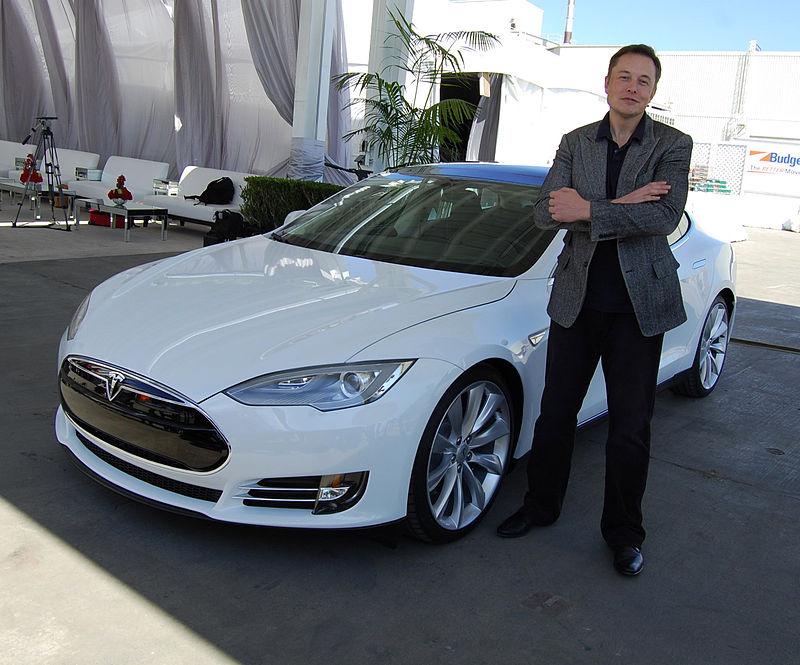

There is no respite for a company that has admitted it has rigged as many as 11 million of its vehicles, so the criticism and woes keep piling on Volkswagen. Criminal inquiries and lawsuits are already underway, and even before the fines and litigation costs add up, the German automaker will have the expensive task of completing what it says is a promise to retrofit cars that were installed with “defeat device” software.
So what happens to emissions testing, a process many automobile owners endure annually, which contribute millions to the states’ coffers?
According to Tesla CEO Elon Musk, the solution is simple: random emissions testing on cars when they are on the road, not in an auto service center’s garage.
"The obvious move is to pick cars at random and then test the emissions in transit,” Musk recently told reporters during a business trip to the Netherlands, where he attended the inauguration of Tesla’s first factory in Europe.
While Volkswagen’s revelations have generated plenty of anger, Musk almost appears to have empathy for the world’s largest automaker. “What Volkswagen is really showing is that we’ve reached the limit of what’s possible with diesel and gasoline, said Musk in a quote widely circulated by major media and blogs. “The time has come to move to a new generation of technology.” How random emissions testing would work, however, was left unexplained by Musk.
Musk, however, may have a point. Diesel car manufacturers have long been frustrated by what they see as the excesses of regulators, which most likely could have led to Volkswagen’s deception and desperation. Manufacturers such as Volkswagen have touted their “clean diesel” models for a long time, and point to studies that show diesel cars have improved remarkably in performance over the past few years. But while automakers have pointed out to increased efficiency, organizations including the Union of Concerned Scientists have noted that when it comes to performance, diesel still is as carbon-intensive as gasoline, if not even more so. Diesel is known for its fuel efficiency -- a gallon or liter of diesel packs in more energy than the equivalent amount of gasoline -- but that doesn't mean its' carbon-free. There is a reduction in greenhouse gas emissions, an overall average of 5 percent--and almost no difference in total oil consumption. And here in the U.S., the world’s largest car market, consumers still have not warmed up to diesel-powered automobiles. Performance, on the road or on the environment, has not swayed them, and now, they definitely not be swayed for the foreseeable future.
The perception of diesel’s fuel economy is one reason why such cars are still popular across the pond in Europe. But that may not be for long as the Volkswagen saga still dominates the press wires and the attention of bureaucrats. Switzerland, for example, is banning the sale of Volkswagen models known to have been fitted with the defeat device software. European consumers may be spooked by Volkswagen’s actions for a long time. So could the answer be electric cars?
Whether the emissions scandal opens more doors for electric cars remains to be seen. That is what Musk inferred during his banter with reporters during his European trip. While electric vehicles have improved remarkably in performance and design the last few years, they still face a long road to mainstream acceptance. But that is not to say Volkswagen could not redeem itself with an electric vehicle that wows consumers and investors. Despite all the naysayers, new EVs keep rolling off the assembly line and into auto shows. Even Apple has much ballyhooed plans to release an electric vehicle by 2019. The clouds over Volkswagen and the auto industry loom large, but there may be more of a silver lining than many of us expect.
Image credit: Maurizio Pesce
Honest Tea: It Ain't Easy Being Mission-Based
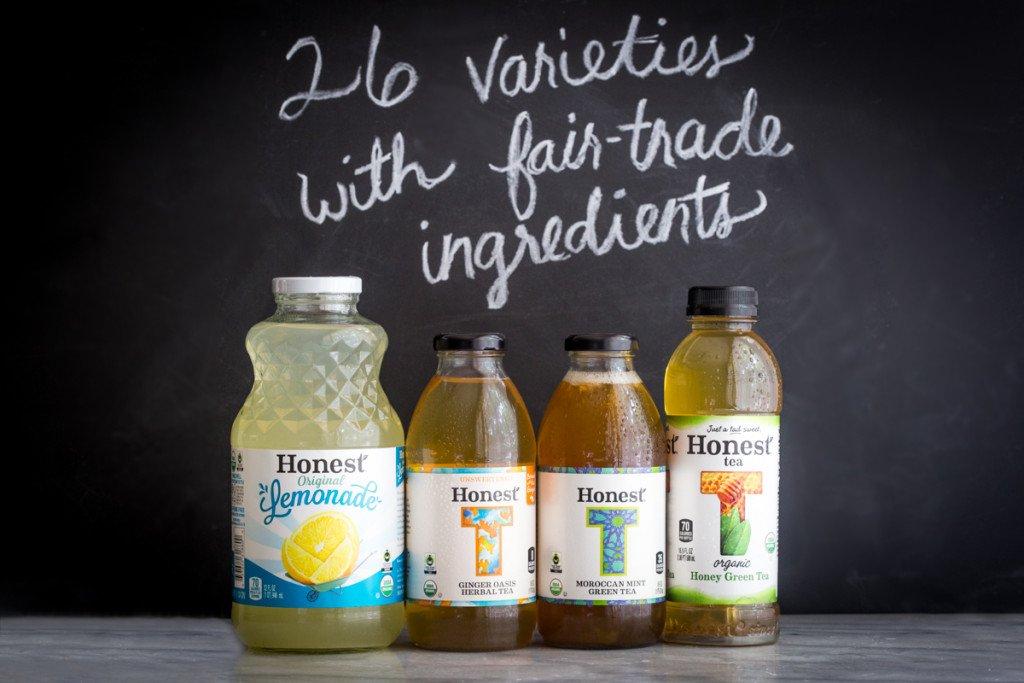

Honest Tea is one reason why the traditional bottling companies, such as Coca-Cola and PepsiCo, are watching the sales of their carbonated drinks flatlining. Consumers are increasingly on the hunt for something more healthful or interesting than the cola, lemon-lime and neon colored fizzy drinks that have been the standard beverages of choice for generations. Add the fact that millennials are largely avoiding the snacks and beverages favored by their parents and grandparents, and PepsiCo and Coca-Cola have found themselves forced to adapt to a new market reality. Or, in the case of Coca-Cola, it simply bought a stake in Honest Tea--and then purchased the firm outright in 2011.
Honest Tea may now be a wholly owned subsidiary of Coca-Cola, but the organic tea and infusion bottler marches to its own drum. The firm, based in Bethesda, Maryland, recently issued its annual sustainability report, touting the achievements and challenges faced by the 17-year-old brand.
The company is growing: 30 percent, in fact, which is an increase any food or beverage brand would envy. With that growth has come more opportunities for tea growers and organic farmers. Honest Tea purchased 6.7 million pounds of organic products in 2014, a 280 percent increase since the company first disclosed those figures in 2009. Fair trade premiums paid by Honest Tea now total over $200,000 annually--although critics of the fair trade certifying organizations will point out this is a firm that generated about $130 million in sales during 2014.
Two of the estates in India from which Honest Tea purchases its tea have seen a lifestyle difference, with fair trade premiums allowing new purchases, from basics such as mosquito nets to funds for a local hospital and orphanage. But while more consumers are demanding that their products are more ethical, either by organic certification, fair trade approval, or both, Honest Tea says it is transparent about when such a move is not always possible. The basil varietal tulsi, for example, has become more popular for its fragrant scent and slightly sweet taste. Honest Tea is one of many companies now marketing tulsi, but any certification will have to wait. Tulsi, according to Honest Tea, is still not in demand enough anytime soon to generate the volume at which fair trade certification becomes economically viable.
Buying containers that have either plant-based or recycled content is also an example of where Honest Tea had to make a tough choice. The demographic buying Honest Tea also wants those 16.9 ounce containers to be more sustainable--and since Honest Tea products are mostly sold in single serving containers, the company sparks its fair share of consumer guilt due to all that waste. But a “plant bottle” is not going to happen for a while, according to the company. Honest Tea says its tea blends are brewed right before they are bottled, and therefore its products require containers that can withstand more heat and pressure. Those juice boxes, popular with kids, also pose their own waste diversion challenge--but Honest Tea partners with TerraCycle, and says the material used in its pouches are recyclable in 50 percent of America’s municipalities. Honest Tea backs up this claim with some pretty impressive numbers, but they are a cumulative total of what TerraCycle has collected, not figures on behalf of Honest Tea.
Overall, being a regular customer of Honest Tea is a benign choice--one isn’t saving the world but not causing bad behavior in some faraway land. The company churns out quality beverages that are low in sugar, and its managers are savvy enough to change its product mix to keep consumers interested. With its green tea now at Wendy’s and zero-calorie carbonated drinks now available on supermarket shelves, Honest Tea is poised for more growth--and walks the walk as a responsible company that is about as genuine as the products it sells. In the meantime, it is making more fans, including a loyal devotee who lives only a few miles away on Pennsylvania Avenue. Image credit: Honest Tea
Why America Needs Worker Co-Ops More Than Ever
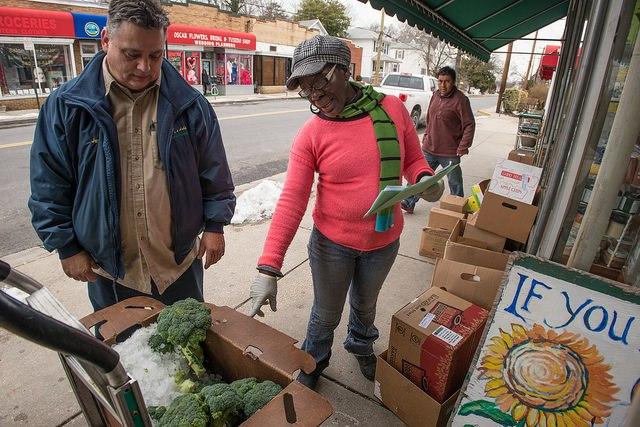

By: Daniel Faris
America is no longer a representative democracy—a fact underscored by decades of grotesque and steadily worsening economic inequality and an election process that depends more on wealthy donors than on an informed electorate.
Case in point: the middle class has been shrinking for decades and is now in the process of disappearing altogether. Since 1979, 90 percent of the economically-challenged have lost money each year, while the wealthiest 10 percent have posted huge gains, according to Forbes (and any reputable economist). The American dream is all but dead for the vast majority of us, with 1% of the population controlling 43% of the nation’s wealth.
Self-determination in the workplace could be one of the keys we need to empower and grow the working class in our nation and re-igniting the American dream. And worker-owned cooperatives could be the match that lights that flame.
The average annual income of the top 1 percent of Americans is $717,000, while the average income of the rest of us is $51,000 annually. That 1 percent of the population has a net worth that averages around 70 times the net worth of the other 99 percent of us. Americans used to believe that anyone could become part of the wealthy 1 percent simply by working harder and longer (some misguided souls still believe this in the year 2015). Increasingly, most realize that notion is no longer a reality in the United States of America.
The unequal distribution of wealth is at the core of many of our nation’s social issues. We cannot survive as a democratic union if the majority of our citizens have become disenfranchised and disengaged from society. With more people voting for American Idols than American Presidents these days, it looks like we’re already headed down that road, our dreams of upward mobility and equal opportunity out the window along the way.
America was meant to be a land of endless possibilities and self-determination. This country was established to give religious and economic freedom to its citizenry. Adams, Jefferson, Franklin, and other signers of the Declaration of Independence knew their proclamations would mean very little without economic freedom. Money is and always has been a major part of the “life, liberty, and the pursuit of happiness” that was promised to Americans. Worker-owned companies can fulfill that promise.
Rather than waiting for wealth to “trickle down” to 99 percent of our citizens, we need to generate greater income for everyone willing to work reasonable hours to attain it. This can be accomplished through worker ownership. When companies are run by the people that work there, wealth is automatically re-distributed to those that earn it. Worker-owned companies have an incentive to succeed in the long-term rather than just profit in the short-term, as the business model of today demands. And this is just the time to do it, too; the middle class seems to be rallying slightly, with foreclosures in 2014 hitting the lowest levels since 2006, despite some horror stories from certain parts of the country. It’s time to harness the momentum of our economy’s modest but encouraging growth and help the middle class rise to their potential. The Affordable Care Act is shaking things up in the workplace already, but there’s a lot of work to do yet.
Even Ronald Reagan, renowned conservative and hero to the Republican right, believed in the power of worker-owned companies. In 1987 Reagan said:
“I can’t help but believe that in the future we will see in the United States and throughout the Western world an increasing trend toward the next logical step, employee ownership. It is a path that befits a free people.”
When short-term return on investment is a business’s only goal, the rich become richer and the poor become poorer, which is exactly what’s been happening in America for half a century. The business model of 2015 calls for wealthy investors to become even wealthier by buying successful companies, pillaging their assets, and promptly closing them to realize huge profits. This is bad for workers, bad for communities, and it contributes to economic inequality by concentrating wealth in the hands of just a few. In America today, you can’t borrow money unless you don’t need it and you can’t make money if you don’t have it to invest. It’s the very worst example of a Catch-22, and we’ve decided to let it dictate how our economy and government operate.
So maybe it’s time to take a look at the alternative.
Worker co-ops are businesses that are owned and operated by the people who work there, and they’re an important step in bridging the gap between the rich and poor in the America of today. Rather than squeezing a business dry to benefit a few wealthy investors, worker-owned businesses benefit the many by focusing on long-term growth and stability, in the same way that real estate investors position themselves to realize growth long-term. The workers/owners are invested in the local community where they work and live and are financially rewarded when the business succeeds and survives. That is good for workers and businesses and it benefits Main Street over Wall Street.
Last year, Senator Bernie Sanders (a longtime supporter of a “one-payer” health care system) wrote “An Agenda for America,” which turned his attention toward worker ownership and improved job creation and productivity throughout the country. “Instead of giving huge tax breaks to corporations which ship our jobs to China,” Sanders proposes to instead “provide assistance to workers who want to purchase their own businesses by establishing worker-owned cooperatives.” This is an idea that could change the world for 99 percent of America’s population and one that Bernie Sanders hopes to sell to American voters in 2015.
Distribution of wealth must be addressed for our nation to survive the future. Worker-owned cooperatives are an important step in healing the great economic divide that is killing America. Most companies today pay their CEO more than 300 times what they pay their workers. This disparity lays the foundation for economic inequality. The Worker Cooperative business model calls for executives to be paid no more than 3-6 times what the workers are paid, paving the way for a fairer and more level playing field for the American working class. This is the road to survival for America and economic freedom for its citizens.
The future is already looking brighter with politicians like Sanders calling for change and building grassroots movements to wrest the economy out of the hands of the wealthiest 1 percent and back into the hands of working Americans. In addition, the United States Federation of Worker’s Cooperatives was established to empower our nation’s workers, offering guidance in creating democratic worker-ownership. The USFWC hopes to advance worker-owned and governed businesses through advocacy, development, and education with the goal of bettering the lives of working Americans. They represent over 100 worker-owned businesses and could even help you and your co-workers affect change where you work and live.
With national elections looming, it’s time for Americans to address the future and embrace a much needed change to the American business model. And make no mistake; this is a moral issue, plain and simple, wherein the central question is this: “Is it okay that our economy is rigged to benefit just a tiny few?” Excuses like “Life isn’t fair” and “That’s just the way it’s always been” will continue to ring false until we address these issues in responsible ways.
Daniel Faris is a graduate of Susquehanna University's Writers Institute. When he's not writing about corporate responsibility, you can find him over at New Music Friday discussing progressive music and philosophy.
For the SDGs to Succeed, Combine Old and New Power
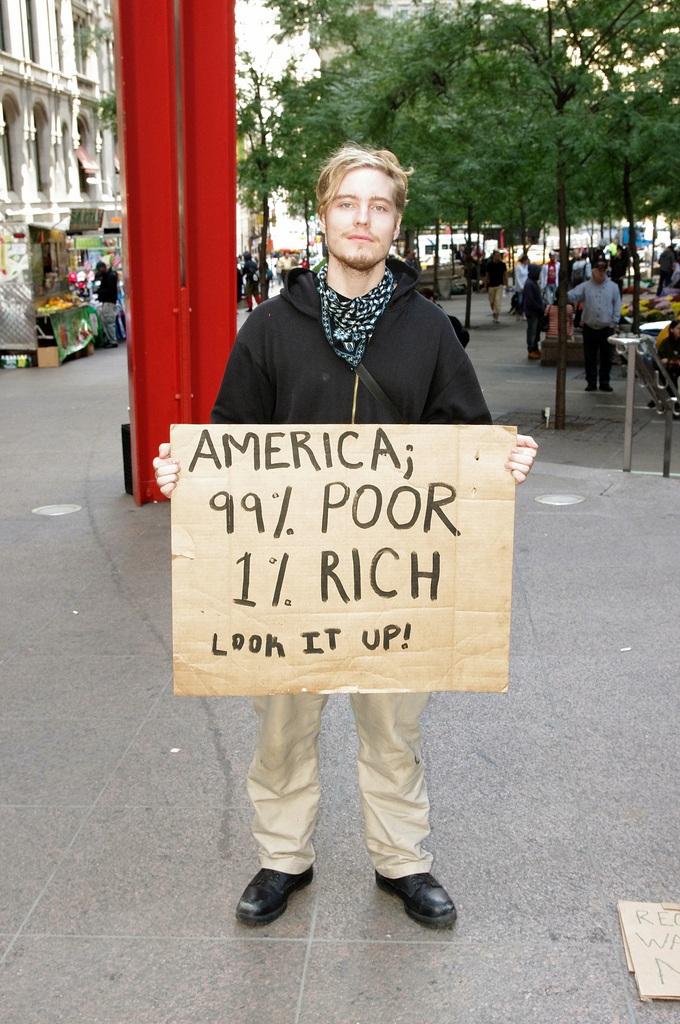

By Noa Gafni
Now that diplomats have adopted a development agenda which strives to reduce poverty, fight injustice and end climate change by 2030, many of us are wondering, “how”?
The 193 world leaders at the UN General Assembly committed to 17 global goals with 169 indicators. The effort is so ambitious that one of the 17 goals specifically calls out the need for partnerships. Many of us have heard about public-private partnerships and other multi-stakeholder initiatives. But what if we looked at a new type of partnership- between large organizations and a generation of grassroots change-makers looking to make a difference?
We often think of millennials as protestors, who occupied Wall Street and created tent cities in Tel Aviv. But, in recent years, millennials have begun to work alongside institutions and individuals that already have a seat at the table, channeling their energy in a constructive manner.
In essence, they have created a new type of social movement-- conscious movement. Conscious movements funnel the energy of young people and the gravitas of established institutions to bring about positive social change.
From the Global Shapers Community of the World Economic Forum to Lean In, a conscious movement launched by Facebook COO Sheryl Sandberg, conscious movements create a powerful combination that brings together old and new power, online and offline interactions and global reach with local impact.
Old and New Power
Many people talk about “new power,” which is more open and participatory than “old power,” which is closed and hierarchical. It seems like these two types of power are completely incompatible. But conscious movements manage this tension and turn it into an opportunity. The Global Shapers Community, part of the World Economic Forum, brings together Global Shapers, who are under 30 years old with the CEOs and world leaders who go to Davos each year. Shapers take part in cross-mentorship schemes where they learn from world leaders, and these leaders, in turn, learn from the Global Shapers.
Connecting on and offline
Conscious movements recognize the importance of both online and in-person meetings. In a world that emphasizes online interactions over in-person gatherings, conscious movements flip this logic on its head. Lean In is a conscious movement launched by Sheryl Sandberg, Facebook’s Chief Operating Officer. Lean In encourages women to further their careers by launching Lean In Circles-- in-person gatherings where women discuss their professional challenges, seek advice and share resources. Lean In's website provides women with the tools to create and manage meetings, access expert videos (for professional development during meetings) and interact with other Circles nearby. But the focus remains on building trust through small, in-person meetings.
Bridging Global and Local
Even though the world is more global than ever before, most of our daily contact still takes place locally. Of all the telephone calling minutes in the world last year, only 2 percent were cross-border calls and the average person consumes just 1-2 percent of their news on foreign sites.
Conscious movements make the most of both the global and the local. +SocialGood unites changemakers around the power of innovation and technology to make the world a better place. Globally connected influencers work with +SocialGood to share ideas of what’s working in global development and adapt it to their local communities. Whilst the Social Good Summit took place in New York during United Nations General Assembly week, over 100 local meetups took place around the world, including in the Philippines, Rwanda and Tunisia.
As someone who has not only participated but also helped nurture several of these conscious movements, I have seen the benefits to organizations, millennials, and more important, the world at large. In a time where we’re looking for solutions to the world’s biggest problems, conscious movements play a key role. Who is more invested in a better world at 2030 than the millennial generation? And who is better placed to connect, scale and leverage the enthusiasm of millennials than established institutions? Conscious movements can be a key type of partnership to reach the Sustainable Development Goals.
Noa Gafni is a Fellow of Social Innovation at the University of Cambridge and the CEO of Impact Squared, a movement building consultancy. She is a World Economic Forum Global Shaper, a +SocialGood Connector and a Lean In Organiser.
Six Major American Banks Call For Strong COP21 Agreement


Six major American banks (Bank of America, Citi, Goldman Sachs, JPMorgan Chase, Morgan Stanley and Wells Fargo) issued a joint statement calling for the world’s governments to create a strong agreement in Paris later this year. That’s when the world’s leaders will hammer out a successor to the Kyoto Protocol.
In the statement published by Ceres, the six major banks acknowledged that as “major financial institutions, working with clients and customers around the globe” they have the “business opportunity to build a more sustainable, low-carbon economy and the ability to help manage and mitigate these climate-related risks.” However, those activities are not “sufficient to meet global climate challenges,” they went on to declare. For that reason, they are calling for “leadership and cooperation among governments for commitments leading to a strong global climate agreement.”
“Financial institutions have a critical role to play in financing the transition to a low-carbon future,” said Mindy Lubber, President of Ceres and director of its $13 trillion Investor Network on Climate Risk, in a statement. “As U.S. negotiators enter climate talks in Paris, they can say with confidence that the business and financial community in this country is ready for government leadership to address climate change.”
What the six banks are doing to tackle climate change
Since climate change is a major business challenge that poses both risk and opportunities, banks will be affected by it. “Banks will be affected by climate change mostly indirectly to the extent that general economic activity is affected,” stated a 2009 UN analysis of climate strategy in over 100 banks worldwide.All six of the major banks are already working to tackle climate change. Here’s a short overview of their efforts:
- JP Morgan Chase has a goal to reduce greenhouse gas (GHG) emissions by 40 percent below 2005 levels by the end of 2020. It has already met its 2012 target to reduce emissions by 20 percent.
- Goldman Sachs has a goal of reducing GHG emissions to zero by 2020.
- Bank of America is investing $125 billion in low-carbon business by 2025 through lending, investing, capital raising, advisory services and developing solutions for clients worldwide. Since 2007, it has provided over $39 billion in financing for low-carbon activities.
- Citi committed to lending, investing and facilitating $100 billion from 2014 to 2023 in activities that reduce climate change impacts and creating environmental solutions.
- Wells Fargo has provided over $52 billion in environmental finance since 2005.
- Morgan Stanley is committed to engage with clients, regulators and policy makers to both establish and enhance strong climate policy globally.
San Diego Airport Inspires Flyers to Pony Up for Offsets
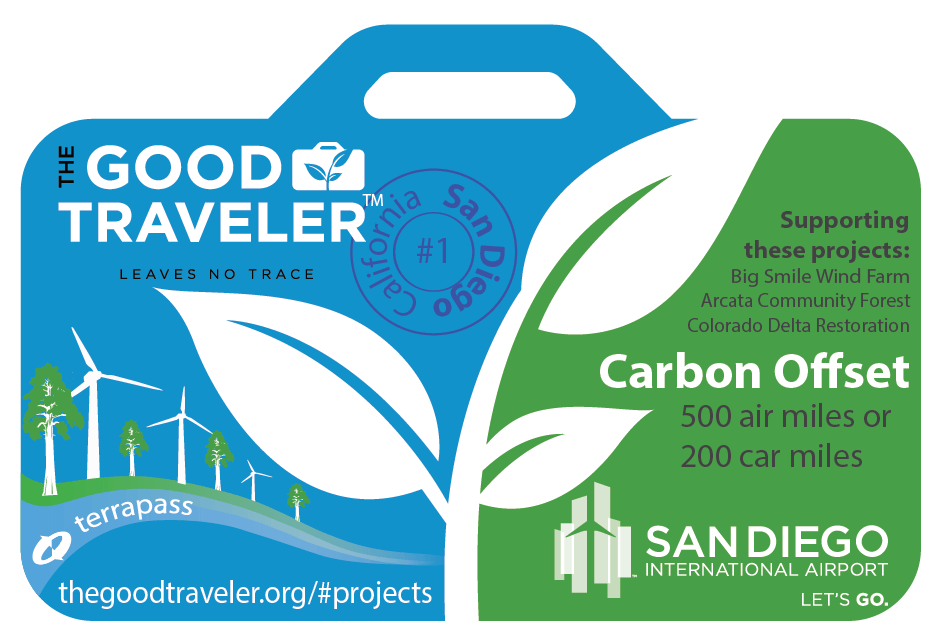

By Paul Manasjan, San Diego County Regional Airport Authority
The Boy Scouts of America and Lao Tzu, the 6th Century Chinese philosopher and father of Taoism, agreed on at least one thing: “The good traveler leaves no trace (or tracks).” In a world with loved ones and business colleagues spread around the globe, it’s hard to avoid flying, but it’s still important to apply those principals.
Transportation is second only to electricity generation in the emissions of CO2 according to EPA figures published in April of this year. While air travel is only six percent of the carbon footprint from transportation, for those of us that fly regularly that percentage can be a lot higher.
Realistically, it’s unlikely that our flights will be subject to a carbon tax here in the U.S. anytime soon, so the decision to purchase a carbon offset when you fly is likely to be an individual one. Less than one percent of us purchase carbon offsets for our flights on a regular basis.
That said, it is still possible to make our core product -- air travel -- more sustainable.
In Australia JetStar, the regional arm of Qantas, over ten percent of its passengers purchase carbon offsets, with much higher numbers on shorter routes where the cost of offsetting is lowest.
Earlier this year, we commissioned a survey of a thousand Californian travelers’ attitudes to climate change and their willingness to pay up to $9 to offset the environmental impact of their journey. Nine dollars will purchase carbon offsets that would support improved forest management projects and additional alternative energy production to offset the greenhouse gas equivalents from a cross-country flight. The findings were very surprising.
Seventy-three percent of Californians surveyed confirmed that climate change is occurring and that humans are a significant factor. Only seven percent of respondents believed it wasn’t happening.
The second surprise was that even more people, 78 percent of them, were willing to pay up to $9 if there was an effective way of eliminating the environmental impact of their flight.
You can see the full details from the survey at www.thegoodtraveler.org/#blog.
The survey results were a cause for optimism, but also raised an important question: If 78 percent of people are willing to pay to offset the impact of their flight, why are fewer than one percent doing so?
It comes down to three major factors: convenience, affordability, and “meaningfulness.” For the purchase of an offset to be meaningful, people needed to be educated and informed about where their money was going. Those projects needed to be inspiring and people needed to be confident this was an effective investment in solving the sustainability problem.
One of most significant learnings from our pilot was the importance of local projects -- people need to feel connected to what we are doing. While the climate change impact of greenhouse gas reductions is a global phenomenon, supporters were a lot more motivated when we discussed our plans for forestry projects they might be able to see first hand. We chose an improved forest management project in Arcata Community Forest, 800 miles north of San Diego, but people wanted something even closer to our city. As a result we are working to identify projects with local social benefits that will create jobs in San Diego and reduce the power bills for local low-income families. As The Good Traveler is deployed, identifying these projects and managing the economics that relates to smaller initiatives will be an important part of localizing what we hope will be a universal idea.
The next question we had to answer was whether an airport could bridge the gap between peoples’ desire to fly green and their actual behavior. Was some other organization better placed, more willing and able to own this? To answer that question, we purchased a large supply of coffee and Post-It notes and locked ourselves for hours in a room with people from different functions in the airport.
When we emerged, blinking in the daylight, we answered, “Yes.” Airports are an incredible hub of people, planes, trains, automobiles, tourist destinations, non-profits, and local businesses. We have a rich array of customer touch points and communication channels, with hooks into digital displays, billboards, mobile apps, WiFi access points, web sites, ticket printing, kiosks, and retail concessions, whose staff talk to lots of passengers every day. For example, San Diego International Airport hosts 18 million passengers a year.
Some of the keys to success the team identified were simplicity, branding, and scale. The Good Traveler brand was created and trademarked to enable the environmental message to be simplified and shared with other airports and travel-related businesses. It turns out that most businesses have some involvement with travel. When you take off from one airport, you generally land at another one. If a passenger sees The Good Traveler brand when they take off and they see it when they land, we have a better chance to convey our environmental message and break through the noise.
Most travelers rely on wireless access for their laptop, tablet, or phone. We thought it made sense to add the opportunity to purchase a carbon offset to the portal where everyone has to log-on to get his or her free WiFi. When you visit our airport and log-on, we present two buttons that both take you to a page where you can do that.
One of the pieces of feedback we received from a traveler who had bought an offset once and never done it again. He felt he hadn’t got anything for his money. No thank you or acknowledgement.
This fired our imagination with ways we could use “gamification” in a mobile app to track peoples’ footprint, their offset purchases, and to offer them badges and awards to share with their friends via social media to give them a sense of achievement. However, we wanted to start simple. Developing a successful mobile app is like becoming a movie star. Many people want to do it, but few people succeed. The large proportion of handsome car valets and waitresses in LA reminds us of that. So we thought we would defer that approach until having gained more momentum and start with a viral technology that predates the smartphone … the sticker.
Stickers can help to distinguish one black bag from another, they can tell a story about where we have been, and the kind of person we are. A Good Traveler sticker or tag, costs a dollar, and it offsets the greenhouse gas emissions produced by 500 miles of flying with funds going to three projects through TerraPass - Arcata Community Forest, the Big Smile Wind Farm, as well as a water restoration project in the Colorado Delta.
Merchants inside the airport and out can purchase these tags in bulk from TerraPass, our licensed partner for the pilot of this program, so that travelers can buy a tag along with their coffee, newspaper, or meal while waiting for their plane. We changed our bylaws and worked with our merchants in order to allow 100% of the revenue from sales to go to the offset.
Our first experience with selling the tags was at Art Walk, a community art festival held near the airport. People attending were expecting to purchase art not offsets, so we were delighted when two-thirds of the people that visited our booth there and asked, “What is The Good Traveler?” went on to buy one or more tags to offset their future travel.
Each tag design is given a unique number and we hope that they will become collectible souvenirs of peoples’ travel experiences, a little more compact than bringing back a Starbucks mug from each place you visit.
We have already started to talk to San Diego businesses and travel destinations about co-branding and selling tags. We expect to announce the participation of our first hotel resort and an innovative small business, which will be offering tags to their customers to offset the carbon from the visits to their offices.
Our first airport concession will be Ryan Brothers’ Coffee, a local San Diego institution that has been selling organic and fair-trade coffee for decades and has a presence in both our terminals (pre-security – so you don’t have to fly to buy their brews). Starting in September, you will be able to buy a tall non-fat latte, with a Good Traveler Carbon Offset on the side.
The Good Traveler leaves no trace, but can still bring home some great memories of their visit.
Paul Manasjan is Environmental Affairs Director for the San Diego County Regional Airport Authority, which owns and operates San Diego International Airport (SDIA).
SDIA was the first major airport in the nation to adopt a formal sustainability policy, pledging to be a role model for sustainability in the industry. It was the first U.S. airport to sign the Climate Declaration, a call to action that urges federal and state policymakers to seize the economic opportunity of addressing climate change. In 2014, SDIA was awarded Leadership in Energy and Environmental Design (LEED) Platinum certification for The Green Build expansion at Terminal 2 from the U.S. Green Building Council, making SDIA home to the first LEED Platinum-certified commercial airport terminal in the world.
Images 1,3 copyright San Diego County Regional Health Authority, Images 2, 4 copyright Good Traveller. Used with permission.
Why We Need to Support Community Health Centers for Another 50 Years
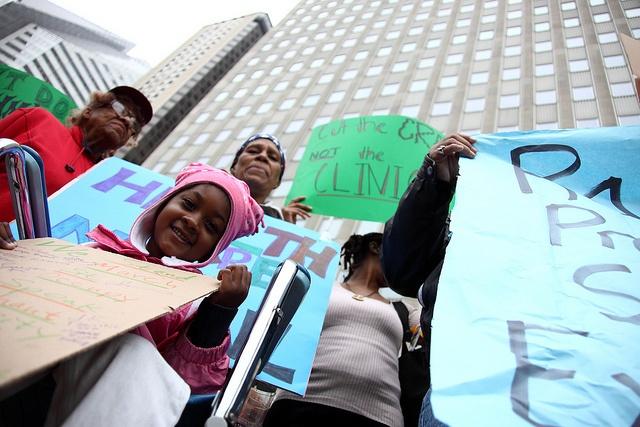

By Eileen Howard Boone, CVS
This year marks the 50th anniversary of the National Association of Community Health Centers – and a time to reflect on how the organization began – as a modest social experiment during America’s War on Poverty. It was the first time in our nation’s history that physicians, nurses, local community leaders and government officials came together to build a new type of community-based health care that would bring doctors, primary and preventative health services into low-income communities. It would serve all people – no matter who they were, where they lived, regardless of their income or insurance status. It would empower individuals living in those communities and give them an opportunity to fulfill their health care needs, which for most, had been neglected.
That small investment 50 years ago has saved countless lives and has strengthened thousands of communities. Today, community health centers stand as the largest and the most successful primary care system in the country and serve more than 24 million Americans, including 7 million children and more than 260,000 veterans in 9,200 communities nationwide. They have increased access to much-needed health care, giving more people the chance to live healthier and stronger.
As a nation and as individuals, we can all do our part to address the need for more accessible, coordinated health care in our local communities to help ensure that every person has the resources they need to stay healthy. We’ve seen firsthand the impact we can make when we work together to improve care coordination. Through the CVS Health Foundation, we’ve been able to make meaningful progress toward improving care coordination, better managing chronic conditions and increasing access to care by supporting local community health centers nationwide through our partnership with the National Association of Community Health Centers.
For example, in Massachusetts, the MetroWest Free Medical Program has used grant dollars to provide intensive and coordinated health education to its patients as well as follow-up care, which helped 92 percent of follow-up patients improve their medication adherence.
The St. Thomas Clinic in Franklin, Indiana, was able to use funds from the partnership to improve compliance with hospital discharge instructions from 33 percent prior to the Coordinator of Care program, to 77 percent in 2014.
When compared to other health care providers, health centers produce more than $1,200 in savings per patient per year and health centers generate $24 billion in savings a year across the entire health care system. Their patients are less likely to visit emergency rooms for non-emergency care and hospital stays are lessened or even prevented because health care centers focus on preventative patient education and effective management of chronic and costly diseases.
But health centers are more than just health care providers: They support the community through job creation. Across the country, health centers employ over 160,000 full-time doctors, nurses and other health care professionals and support staff, which also includes our nation’s veterans. Health centers are often the largest providers of jobs and jobs training in their communities.
Throughout their 50 years, community health centers have always been called upon to do more – to serve a greater need to make people healthier and communities stronger. Yet today, 62 million Americans still live in areas with little or no access to doctors or health services. So the question is – will community health centers be needed in the future?
We believe they will. While changes in our health care system will qualify millions of more people for health coverage, it's still a challenge for many, especially those in underserved populations, to access quality care. As we celebrate 50 years of America’s community health centers this year, we look forward to many more years of supporting community health centers in the future – our health and our communities are depending on it.
As part of their commitment to helping people on their path to better health, the CVS Health Foundation made a multi-year $5 million investment to increase affordable access to health care in communities nationwide through partnerships with national community health organizations, including the National Association of Community Health Centers. For information on how you can support community health centers, click here.
Eileen Howard Boone is Senior Vice President, Corporate Social Responsibility and Philanthropy, CVS Health and President of the CVS Health Foundation
BAT, AB InBev and Schneider Electric join latest supply chain top table


Schneider Electric, British American Tobacco and AB InBev have joined the top 15 European supply chains in Gartner Inc's annual ranking.
Gartner identified the top 15 performers, based on a combination of financial metrics, revenue growth, return on assets and the opinion of peers and Gartner supply chain analysts.
The top three remain the same as last year - Unilever, Inditex and H&M - followed by Nestlé, L'Oréal, Diageo, Reckitt Benckiser, BMW, Delphi Automotive, Schneider Electric, BASF, BAT , AB InBev, GSK and Volkswagen.
"The top three companies remain unchanged from last year, because they continued to demonstrate market-leading supply chain capabilities," said Stan Aronow, research vice president at Gartner.
To see the ranking in full, click here.
Amnesty warns over abuses in diamond supply chain


The Central African Republic’s (CAR) biggest traders have purchased diamonds worth several million dollars without properly investigating whether they financed armed groups, Amnesty International claims in a new report.
And CAR’s diamond companies could soon start exporting diamonds again following its government agreeing to meet the conditions of the Kimberley Process, which is responsible for preventing the international trade in blood diamonds. As a result the export ban, which has been in place since May 2013, could now be partially lifted. Prior to the ban, diamonds represented half the country’s exports.
Lucy Graham, Legal Adviser in Amnesty’s Business and Human Rights Team said: “If companies have bought blood diamonds, they must not be allowed to profit from them. The government should confiscate any blood diamonds, sell them and use the money for the public benefit. The people of CAR have a right to profit from their own natural resources. As the country seeks to rebuild, it needs its diamonds to be a blessing, not a curse.
“This is a wake-up call for the diamond sector. States and companies can no longer use the Kimberley Process as a fig leaf to reassure consumers that their diamonds are ethically sourced.”
Based on interviews with miners and traders, the report details how armed groups both profit from the diamond trade by controlling mine sites and “taxing” or extorting “protection” money from miners and traders.
The report also documents the inspection gaps in diamond trading centres that make it possible for blood diamonds to be traded and sold globally.
Amnesty says it wants the CAR government to confiscate diamonds unless exporting companies can prove they have not financed armed groups.
The report – which looks at several countries in the diamond supply chain, from CAR to Belgium and the United Arab Emirates – also details human rights abuses, smuggling and tax dodging throughout the diamond supply chain.
With the diamond industry due to gather at the Jewellery Industry Summit in March 2016 to discuss responsible sourcing, Amnesty is calling on governments and international diamond companies to support stronger regulation of the sector.
Picture credit: ID 30688504 © Everythingpossible | Dreamstime.com